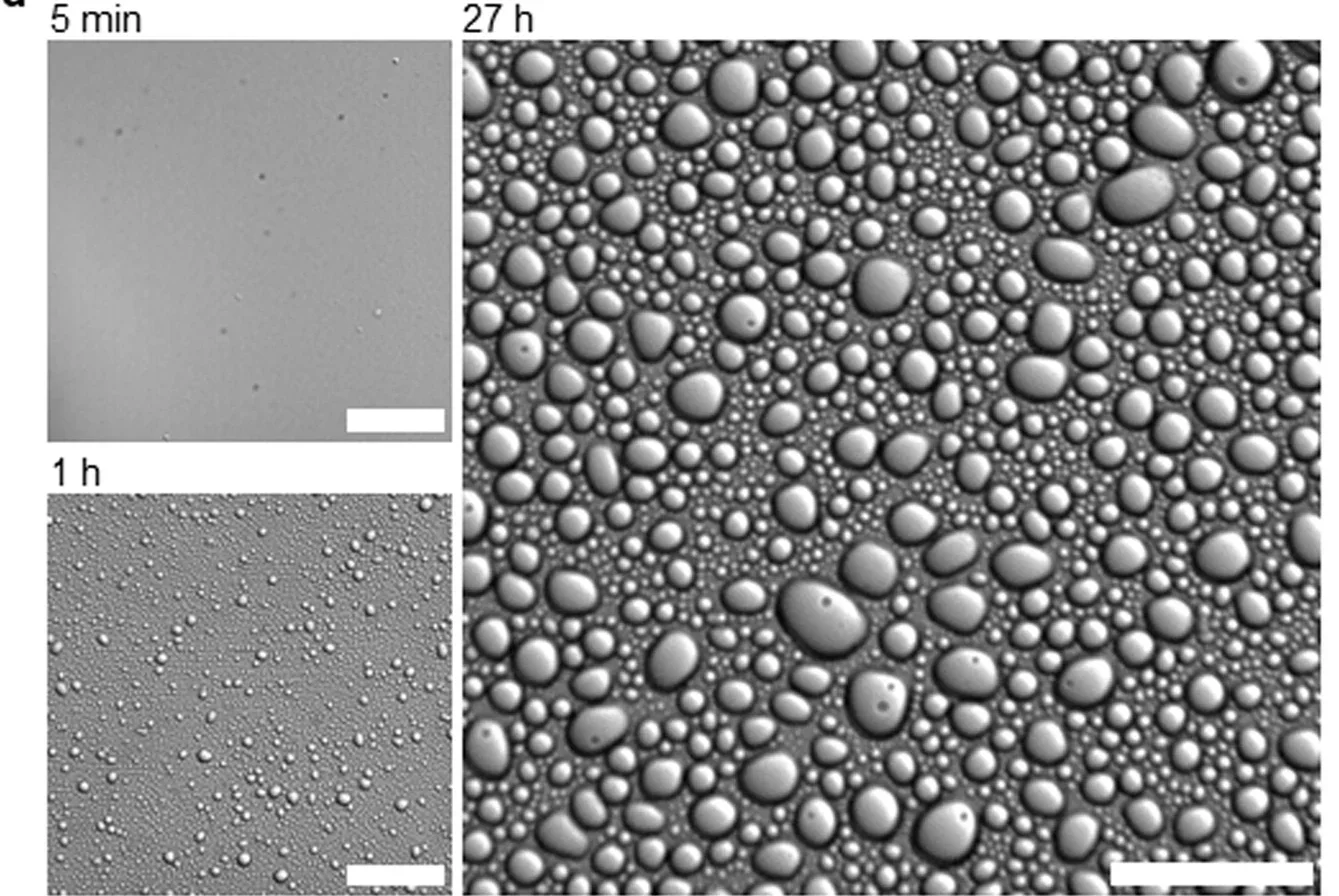Researchers have taken a significant step in uncovering how life began on Earth, introducing a fresh perspective on the complex journey from chemistry to biology.
The work centers on artificial coacervate droplets—tiny molecular assemblies that may bridge the gap between non-living molecules and living cells. Their findings offer profound insights into the origins of life, sparking interest and debates across the scientific community.
The quest to unravel how life arose from simple molecules has intrigued scientists for nearly a century. Early theories proposed in the 1920s by Oparin and Haldane described primitive cells, or “protocells,” as key players in life’s emergence. These protocells were thought to form spontaneously from organic molecules through a process called liquid-liquid phase separation (LLPS).

Protocells, represented as coacervate droplets, displayed unique behaviors resembling life, such as organizing key biomolecules like RNA, lipids, and peptides. However, a critical function remained elusive: the ability to self-reproduce. Without this capacity, scientists struggled to explain how these primitive molecular assemblies evolved into living organisms.
Recent advances have reignited interest in these structures. Studies demonstrated that coacervate droplets exhibit behaviors such as communication and predator-prey interactions, mimicking characteristics of cellular life. However, no experimental evidence confirmed their ability to undergo recursive self-reproduction—a hallmark of life.
A Japanese research team led by Muneyuki Matsuo and Kensuke Kurihara aimed to solve this long-standing mystery.
Their study, published in Nature Communications, marks the first experimental demonstration of protocells capable of self-reproduction. The team constructed droplets via LLPS using amino acid thioesters—a class of molecules inspired by the “thioester world” hypothesis.
Related Stories
The droplets were synthesized in room-temperature water at atmospheric pressure, replicating plausible prebiotic conditions. Amino acid thioesters condensed into peptides, which spontaneously formed droplets. Feeding these droplets with additional monomers allowed them to grow and divide in a steady cycle, while maintaining their size and increasing their number.
Furthermore, the droplets displayed resilience. When nucleic acids and lipids were present, the concentrated nucleic acids localized to the droplets’ inner boundary, stabilizing their structure. This behavior mimics essential biological processes, offering a potential link between prebiotic chemistry and cellular biology.
“This study may serve to explain the emergence of the first living organisms on primordial Earth,” Matsuo explained. The findings suggest that coacervate droplets could represent a critical evolutionary step, bridging the gap between molecular assemblies and life.

Unlike viruses and molecular replicators, these droplets demonstrate self-reproduction—a defining feature of life. They also highlight the importance of periodic environmental stimuli in enabling recursive proliferation. For example, Earth’s light-dark cycles influenced cyanobacterial cell division, while environmental perturbations facilitated proliferation in early bacterial forms.
Such findings challenge the long-standing RNA world hypothesis, which posits that life originated from self-replicating RNA molecules. Instead, Matsuo and Kurihara’s research points to a “droplet world,” where coacervate droplets evolved into complex molecular aggregates capable of replication, organization, and survival.
“This discovery provides a plausible mechanism for how life could have emerged from a mixture of simple organic molecules,” commented Dr. Ramanarayanan Krishnamurthy from the Scripps Research Institute.
The team’s work has significant implications for understanding not only the origins of life on Earth but also the potential for life elsewhere in the universe. By demonstrating that life-like properties can emerge under simple, prebiotic conditions, the findings open doors to studying life’s possibilities on planets with similar environments.

Future research aims to refine the experimental platform, further exploring how amino acid derivatives transition into primitive cells. The researchers hope to unravel the evolutionary pathways that led from molecular assemblies to the earliest organisms.
The discovery also underscores the importance of technology in origins-of-life research. Techniques such as molecular dynamics simulations and microfluidic devices have enabled precise studies of molecule behavior under early Earth-like conditions. These advancements, combined with Matsuo and Kurihara’s breakthrough, push the boundaries of what we understand about life’s beginnings.
“Our results suggest that droplets became evolvable molecular aggregates—one of which became our common ancestor,” said Matsuo. “We hope our work inspires others to explore the mysteries of the origins of life.”
The journey from chemistry to biology is far from simple, but each breakthrough illuminates another piece of the puzzle. The self-reproducing coacervate droplets represent a leap forward, offering tangible evidence of how primitive molecular assemblies could proliferate and evolve.

This discovery challenges long-held assumptions and presents a new framework for understanding life’s origins. As the researchers continue to investigate, the answers may not only redefine humanity’s understanding of its own beginnings but also inform the search for life beyond Earth.
Note: Materials provided above by The Brighter Side of News. Content may be edited for style and length.
Like these kind of feel good stories? Get The Brighter Side of News’ newsletter.
The post Breakthrough discovery explains how all life on Earth began appeared first on The Brighter Side of News.